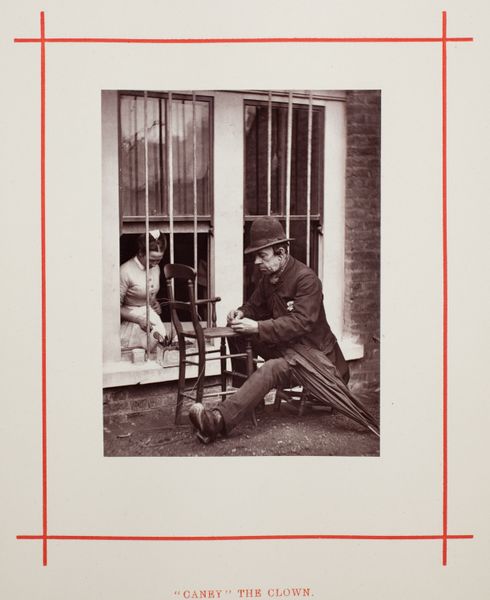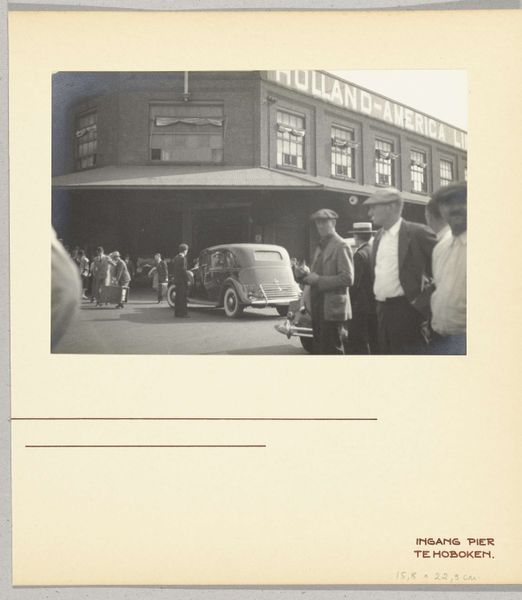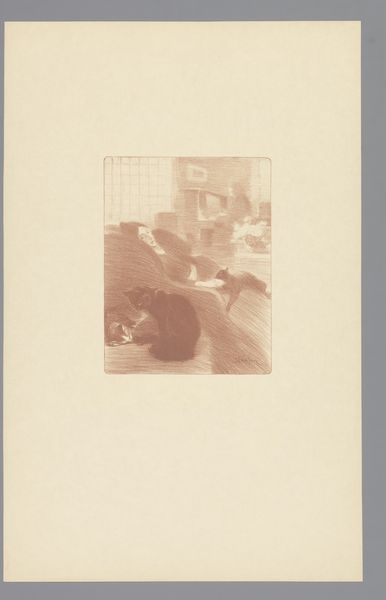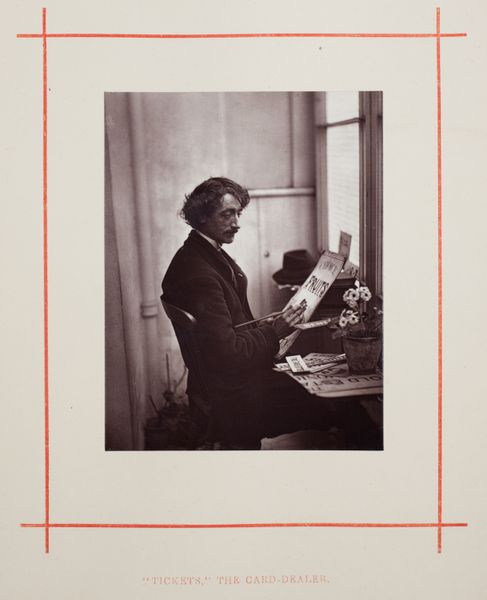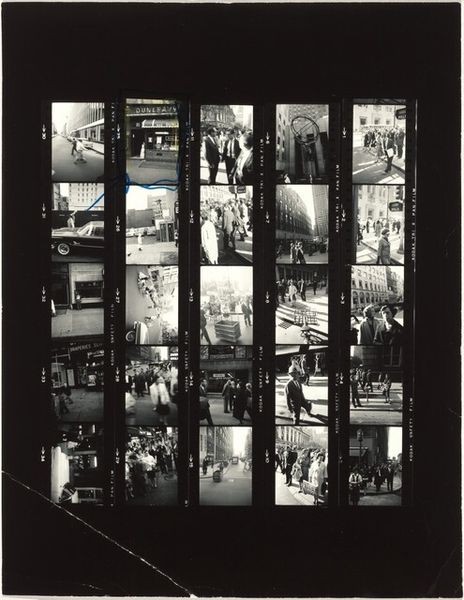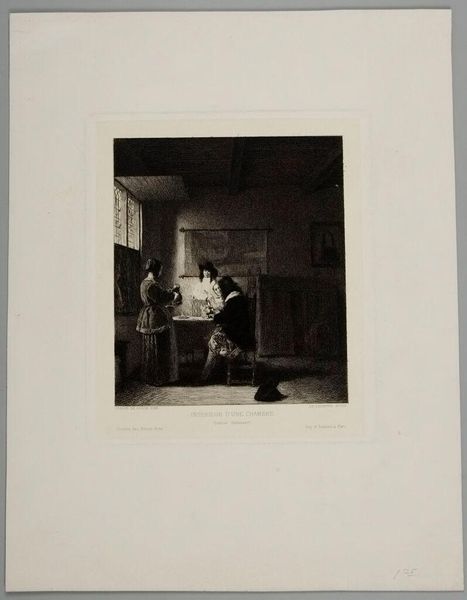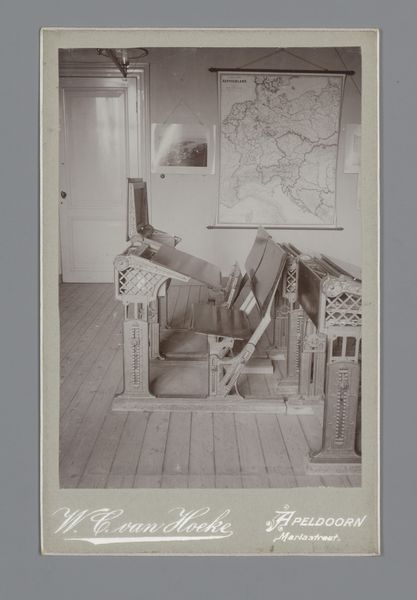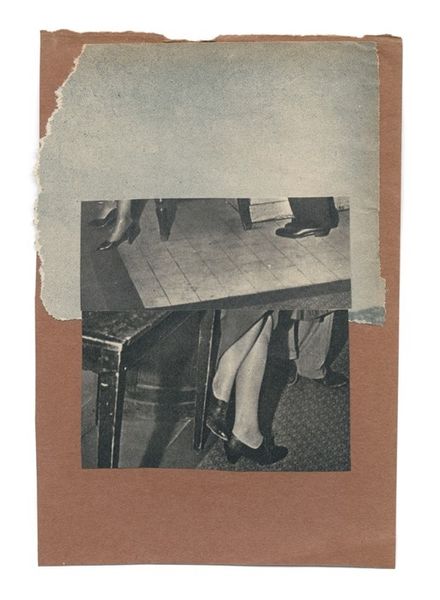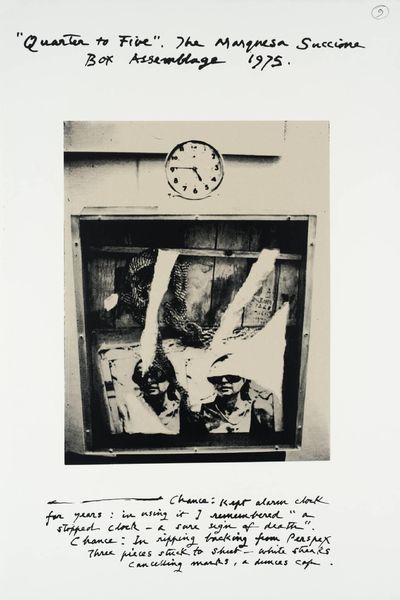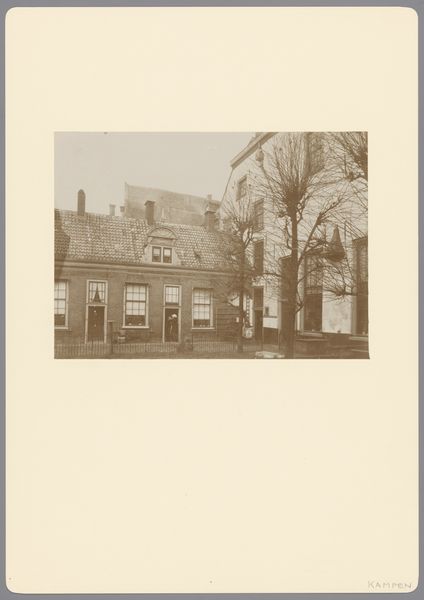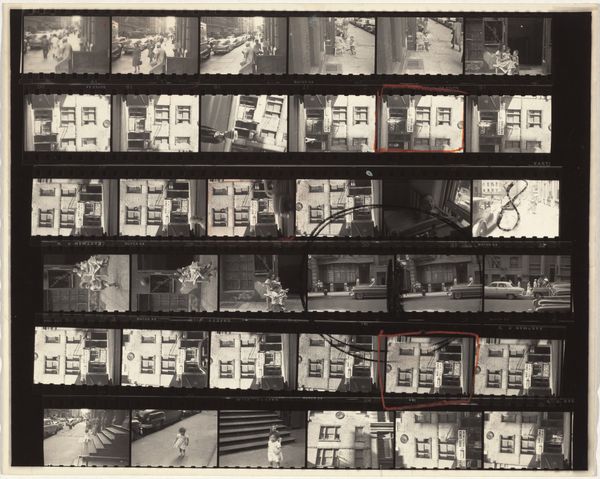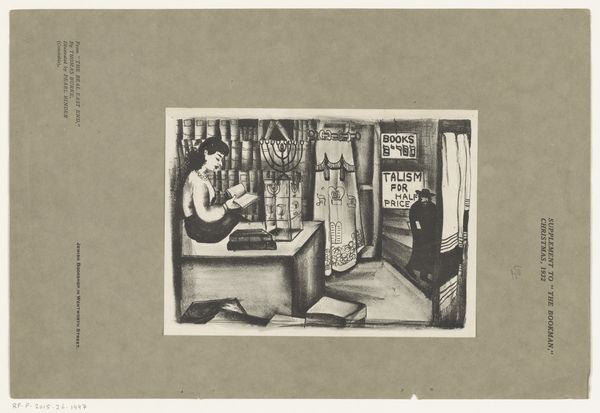
paper, photography
#
portrait
#
16_19th-century
#
paper
#
street-photography
#
photography
#
cityscape
#
genre-painting
#
realism
Dimensions: 11.2 × 8.6 cm (image/paper); 27.1 × 20.9 cm (mount)
Copyright: Public Domain
Curator: Immediately I feel like I’ve stumbled into a play—all chiaroscuro and anticipation! Editor: We’re looking at John Thomson’s “Street Advertising” from 1877, a gelatin silver print. It’s interesting how documentary photography from this period inadvertently captured the texture of social life with great detail. Curator: Yes, it's like peeking behind the curtain! You see two men, caught mid-task it seems, in front of a wall plastered with posters. One’s smoking a cigarette with such nonchalance, it’s almost theatrical. It speaks of labor and leisure intertwining. Editor: Absolutely. These two men become symbols of the urban working class amidst this explosion of early advertising. The very act of pasting ads becomes a mirror reflecting consumer culture, but it's crucial to think who were the audiences back then. The image, to me, brings to mind issues of visibility, labor conditions and even urban blight in this period of unprecedented advertising growth. Curator: Right? All those posters vying for attention! “World-Wide Circulation,” declares one rather boldly. It’s as if the city itself is becoming a canvas for capitalist ambitions. But more intimately, notice the way the light catches the smoke. He looks so calm! Editor: True, and that quiet detail stands in stark contrast to the bold and unapologetic messages surrounding them. The newspapers’ blaring headlines become indistinguishable, contributing to a feeling of total inundation, the one the working class probably lived through daily, struggling to get a break in increasingly hostile cities. I mean, look at the tools there. The pail, ladder and overall bleakness tell a story. Curator: You’re spot on. There's almost something poetic about the way the mundane merges with this relentless commercial energy. I am always captivated by their clothing, those anonymous silhouettes swallowed by that brick wall. Editor: Precisely. But seeing as this photographer had a commitment to portraying diverse social strata in Britain, it allows us to appreciate "Street Advertising" beyond pure aesthetics and examine power structures at play in a period of change and rampant capitalism. Curator: Right. Thinking about the unseen people, the other actors behind these early forms of mass marketing—adds layers of nuance. What stories remain unheard? Editor: And how might photography itself perpetuate these unheard realities? These men’s stories were forever cemented. It invites us to investigate deeper into lives on the margin that were transforming modern society, though invisibly. Curator: What lingers for me is this odd juxtaposition between intimacy and distance, labor and rest, those brief seconds that make up one life, and how, inadvertently, art shows us glimpses of these lives in very fleeting yet revealing ways.
Comments
No comments
Be the first to comment and join the conversation on the ultimate creative platform.
